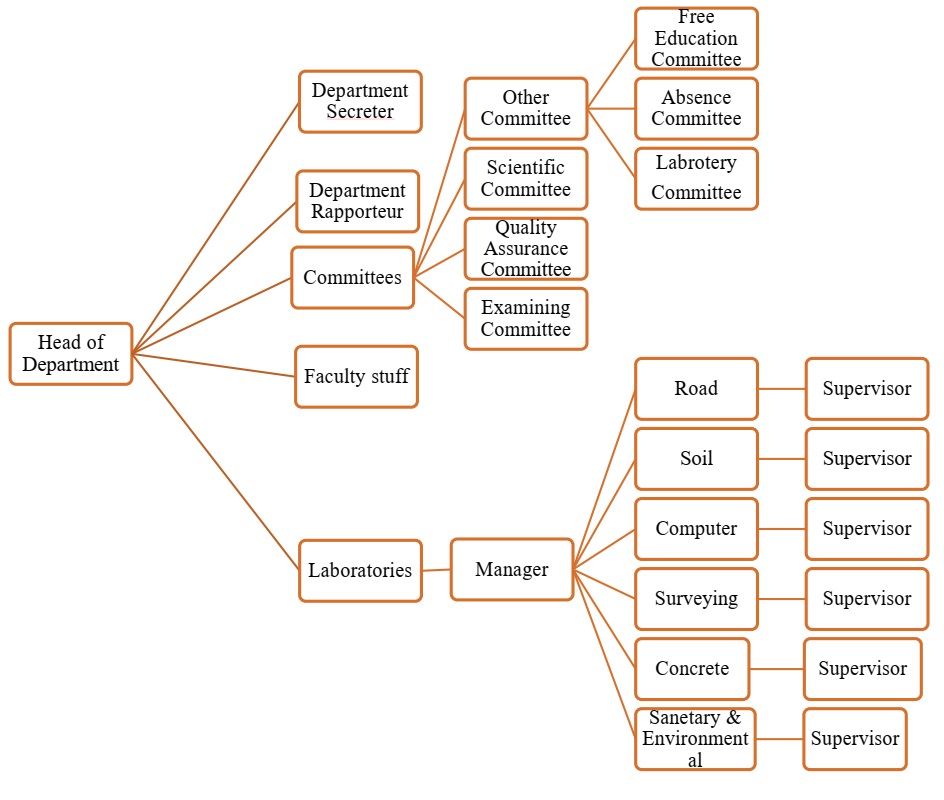Mission
To provide high-quality education to civil engineering students and to sufficiently prepare them to face the major difficulties that may arise in their field. Furthermore, to encourage them to have a broad range of knowledge and expertise in order to deal with potential technical issues in the future. This would lead to greater success in their job as a site engineer and more opportunity to further their education and academic career (Poststudies). It would also allow them to contribute effectively and motivate group spirit for a brighter future of education and scientific research.
Objectives:
1. Graduate Civil engineers to serve in construction and other sectors of the civil engineering labour market.
2. Create a grade of research through the revitalization of the research the students and train them to use the web and electronic libraries and programs and conduct scientific tests.
3. Enrich the practical side of the knowledge by undertaking field visits to some engineering projects, also using global scientific films to grasp the implementation of projects.
4. Improving the teaching and administrative activities to meet international accreditations standards and the mission of the department.
5. Improving the academic abilities of the faculty and attracting highly skilled personnel.
6. Improve the abilities of management and technical supporting staff and attract the highly skilled for employment.
7. Establishing viable applied research that generates knowledge for local and foreign markets.
Organizational Structure of the Civil Department:

SWOT Analysis for Civil Engineering Program:
In carrying out the SWOT analysis for the CE Program, a balanced approach has been adopted which views all facilities in each section. The assessment of strengths and weaknesses is facilitated through surveys and information gathering activities of the committees and documentation in the department, and the evidence provided by the faculty and associates. An external look to identify opportunities and threats is considered complimentary to the internal self-study in the SWOT analysis. National and regional influences and concerns are of paramount importance when decision is regarded to the strategies and actions to address the weaknesses. Furthermore, any strategic planning should also address the local and regional threats. Though no formal survey has been carried out to identify the opportunities and threats, group brainstorming, extensive consultations with knowledgeable faculty and review of local, regional and international developments, as well as review of existing literature on engineering education has led to identify the most relevant opportunities and threats.
 College of Engineering - University of Kirkuk
College of Engineering - University of Kirkuk  Arabic
Arabic  English
English 